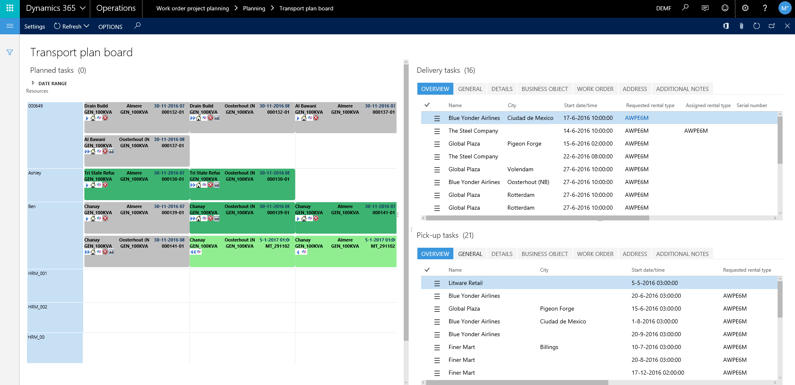Businesses focused on equipment and machinery rental, leasing, and services are looking at challenges and opportunities. Especially the ones that are quite literally driven by their approach to equipment transport management.
In a global, demand-based marketplace, your success depends on whether you can keep customer delivery promises while also meeting financial goals and protecting profit margins. If your transport management company is using or considering Microsoft Dynamics 365, you’ll have a firm foundation. Especially with an ERP system that extends to warehouse and logistics management and rich analytics. What’s critical is that you have a transport management solution that fits seamlessly with Dynamics 365.
Choosing the right transport management system can help you:
Give planning departments complete overviews of trucks across depots
Equip planners to schedule transport and send work orders from a single window
Enable robust collaboration with third-party shippers and carriers
Connect planners and drivers in real time for execution and route optimization
Work in real time with logistics to optimize shipments
Keep customers informed about delivery status and issues
Gain agility for complex routing, multi-channel orders, and partial shipments
Manage complex freight and transport costs and invoicing with a single process
Particularly when it lets you take full advantage of trends that are reshaping KPIs:
Integrating transport management planning and execution with warehouse and logistics management
With the right transport management solution in place, everyone works with connected processes and information. Including all departments and employees involved in processing and fulfilling orders. In addition, transport planners, warehouse staff, and carriers have role-tailored, views of information needed to ensure smooth, efficient order fulfillment and on-time delivery. Furthermore, they’re connected by workflows and real-time communications, backed by structured transport oversight. Whether you work with internal or third-party transport carriers, your ability to proactively resolve warehouse and transport issues and deliver informed, timely service to the customer can differentiate you from other companies.
Image 1: Graphical Transport Management Planning for Microsoft Dynamics 365
Managing supply chain issues through collaboration
You want technologies and solutions that let you effectively handle major impacts such as the capacity crunch—what’s emerging is that equipment rental shippers and carriers need to work together, with an eye to mutual benefit, rather than take a battle stance. Software that lets your company share transport information the way you want and lets you shape values and ideas into structured, collaborative processes is essential to a flexible business model that may include outsourced transport.
Mining business information to improve transport strategy and tactics
You can work with innovations like Business Intelligence to constantly analyze and report on successful outcomes and areas for improvement. If you have one integrated system that includes internal and third-party equipment transport management. You can make minor changes, based on granular insight that takes in the whole market landscape. This leads to major competitive advantage. At a more immediate level, a robust, integrated transport management solution can help you improve specific processes or usage tactics. For example, transport management that incorporates TomTom will give you the data you need to assess the impact of changing fuels, or assess delivery efficiency for different carriers you’re working with. Or you can dive into warehouse data to analyze logistics pick-times for specific equipment and use that to improve transport planning.
We continue to see equipment transport management in the spotlight for equipment and machinery companies that measure customer satisfaction in large part through the filter of successful delivery. Microsoft Dynamics 365 offers the right ERP platform for making equipment transport management part of a unified business model. Download the fact sheet below to learn more.






